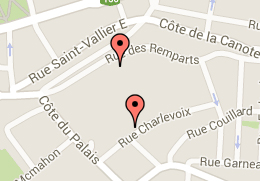Feast of St. Augustine
St. Augustine of Hippo was born in 354 in Thagaste (today Souk-Ahras), Algeria. Son of St. Monica and Patrice, a pagan, he had made his first rites of initiation into the Christian life. Because of his excellence in his studies, his father decided to send him to University. He studied at the university in Carthage. At first, Augustine led a half-hearted life of prayer until he completely turned away from it during his years in Carthage. While in the city, he was a militant disciple of Manichaeism. After his disenchantment with this doctrine, he sailed for Milan, where he met Bishop Ambrose. There, he read the Holy Scriptures, and Augustine understood that the truth he was searching for emanates from Christ. His heart was ready for a flamboyant conversion which occurred when he was thirty-three. A few years after his conversion, he became bishop of Hippo (in Algeria). Today, recognized as one of the most important doctors of the Church, his writings contributed greatly to catholic doctrine. His work on Neo-Platonism, the Confessions and the Rule for Communities remain timeless works.
The rule of St. Augustine is the basis for the constitutions in several religious communities. It emphasizes on charity and fraternity lived among members of the community thus nourishing their life of prayer. This Rule is used by the Augustines de la Miséricorde de Jésus (Augustines of the Mercy of Jesus). The first community of Augustine sisters originated in Dieppe (France). With the years, Monasteries appeared in other French regions, like in Bayeux. This monastery is where blessed Catherine de Saint-Augustin started her vocation. She is an incredible example of fraternal concern, particularly when she volunteered to help the community in Canada. How many times her smile warmed up hard winter days! Her perseverance through hardships gave courage to the community. Therefor, Catherine was a light for the sick, but in addition, for the Augustines in Canada.
sources :
: http://lumiere-et-vie.fr/resources/cariboost_files/LV_280_pages_75-80.pdf
http://www.newadvent.org/cathen/02084a.htm
Image : Pierre de Champagne, Saint-Augustin. ( Public domain).
See all News


